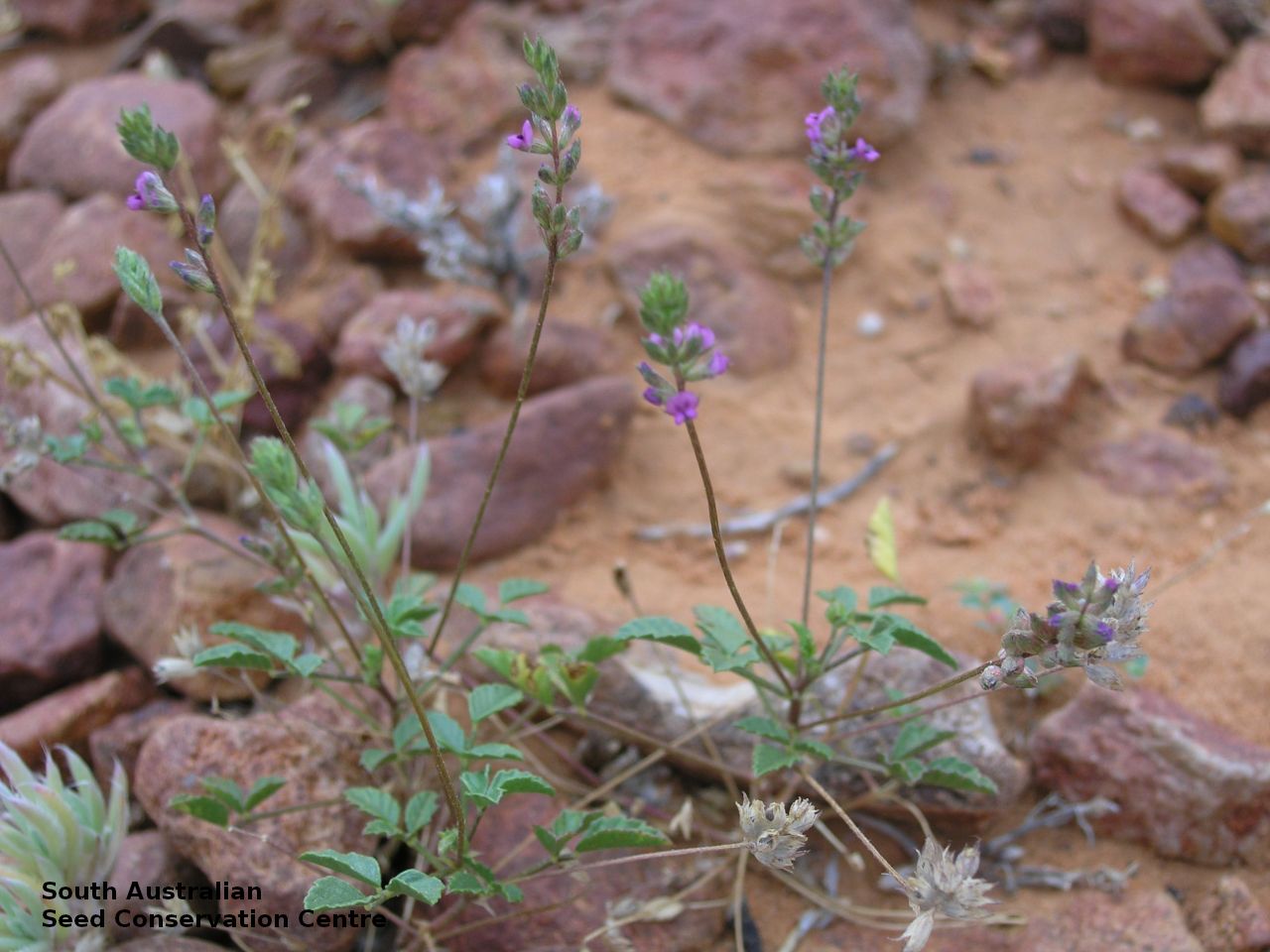
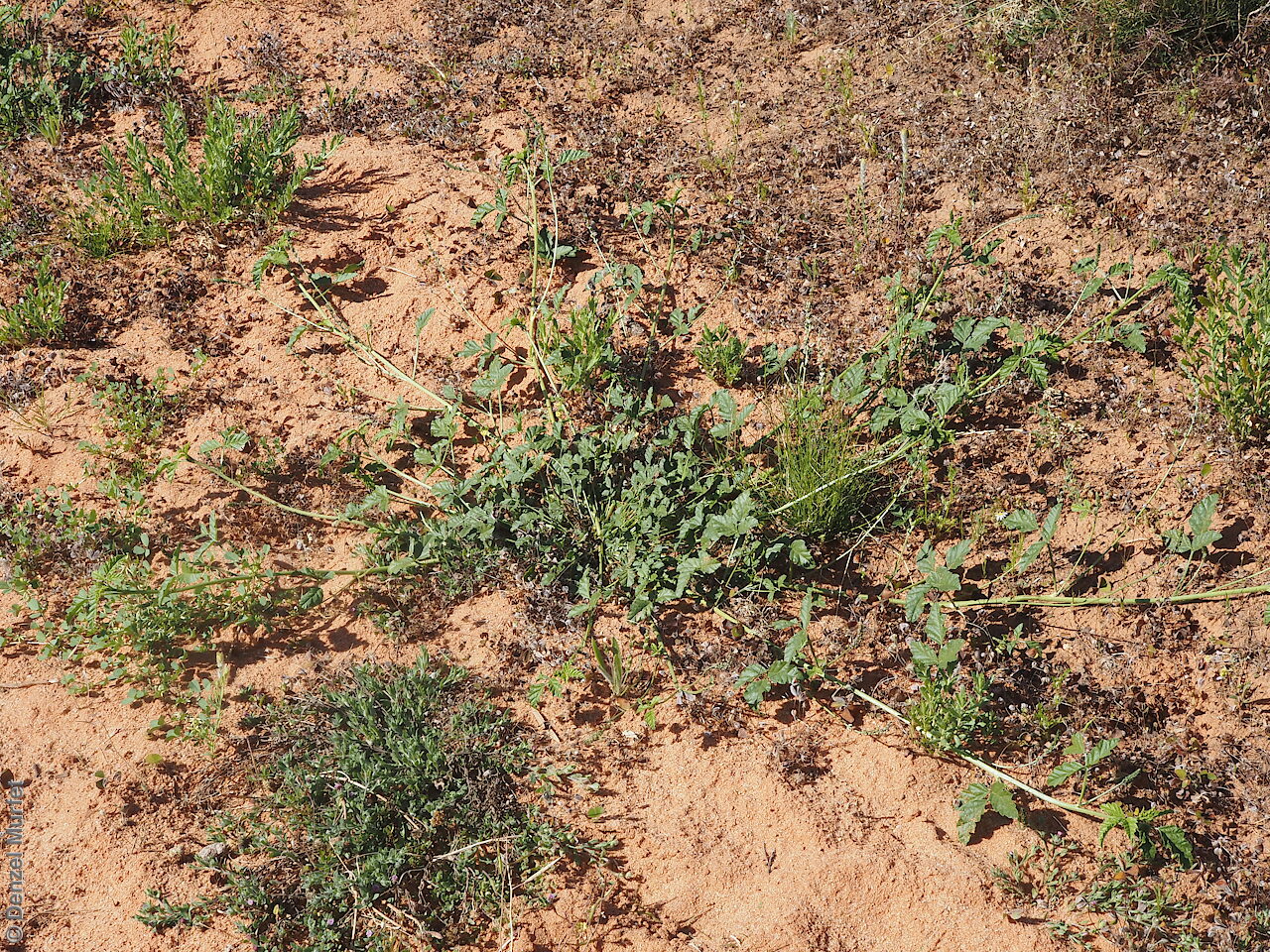
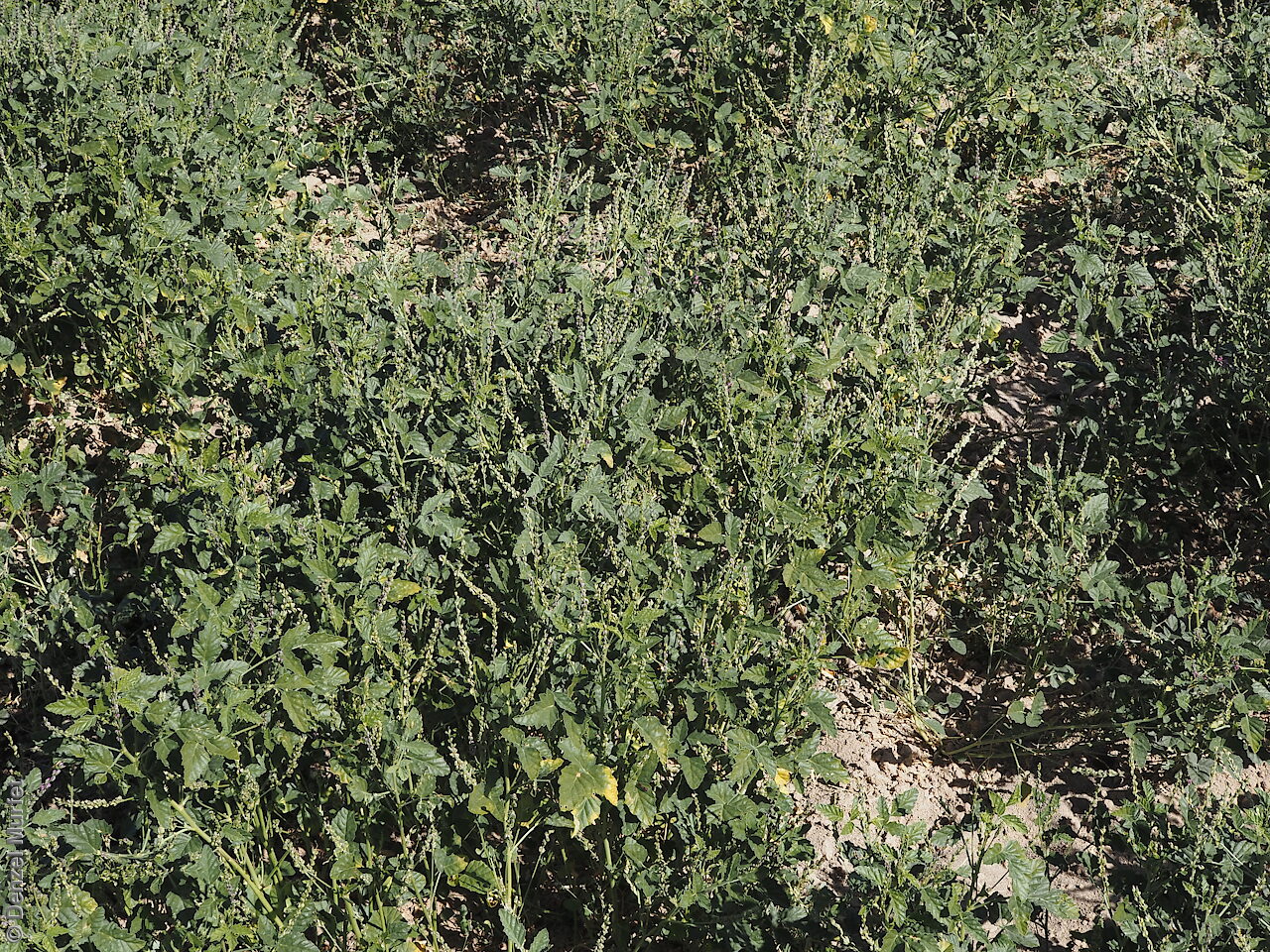
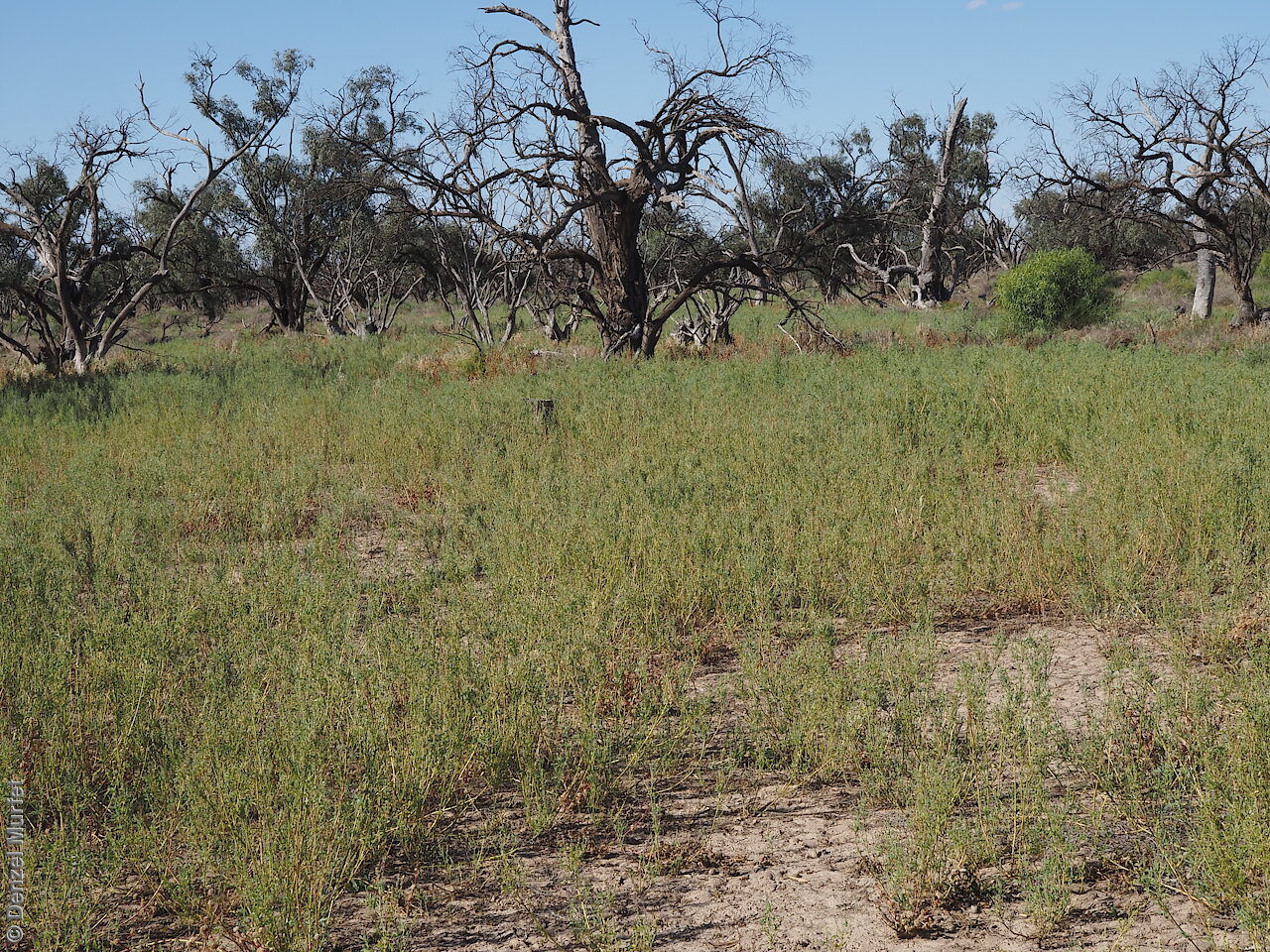
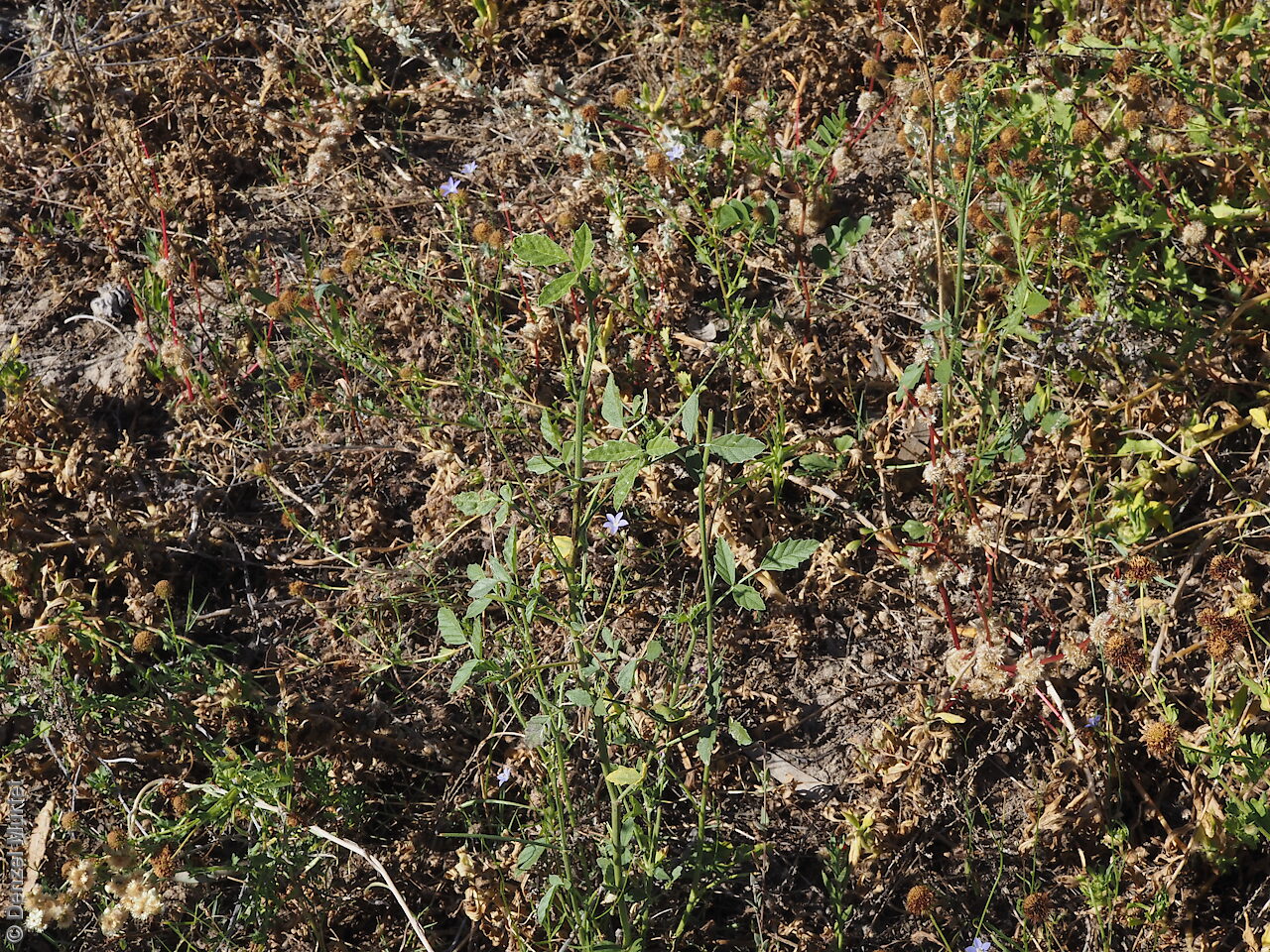
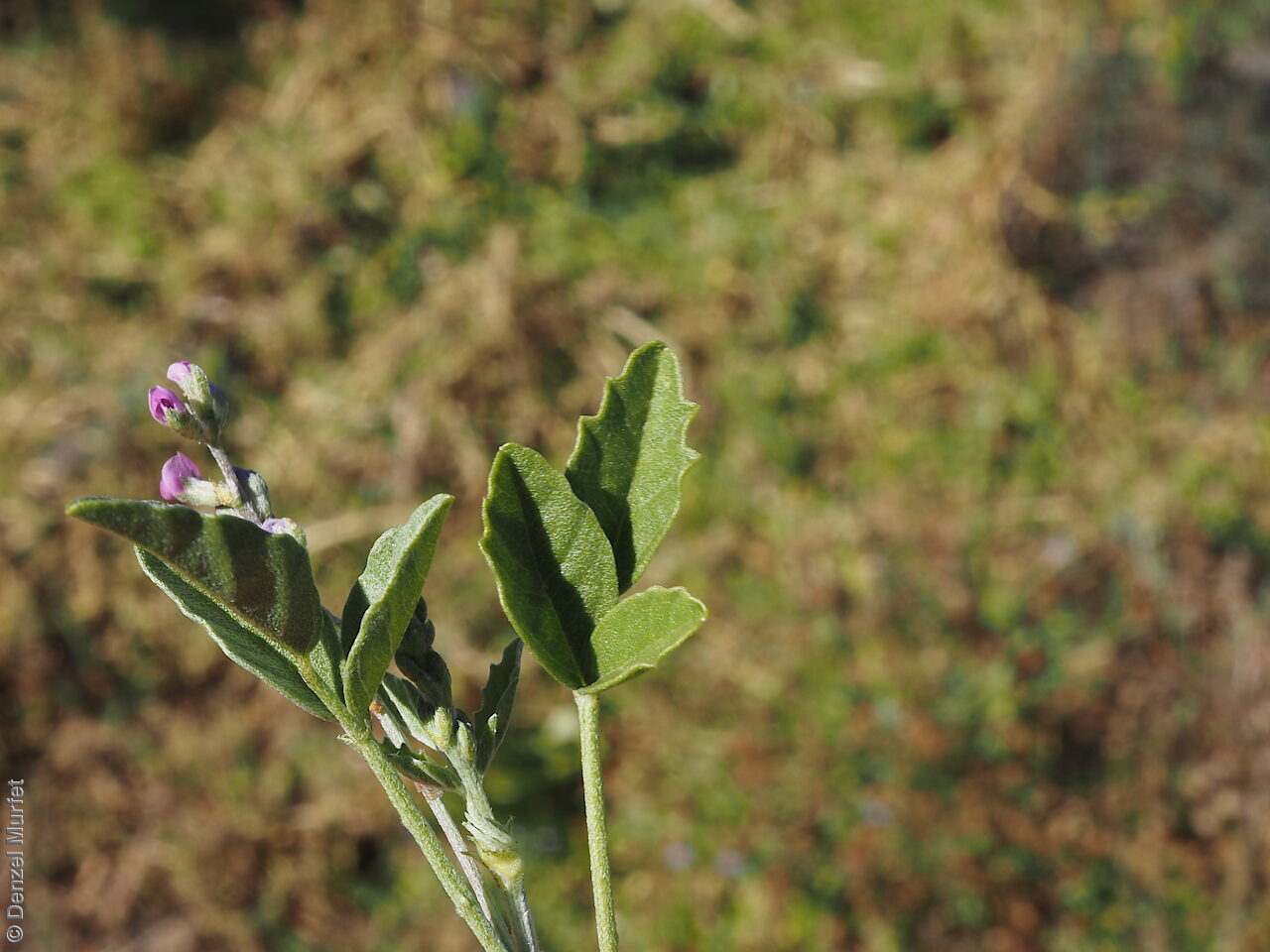
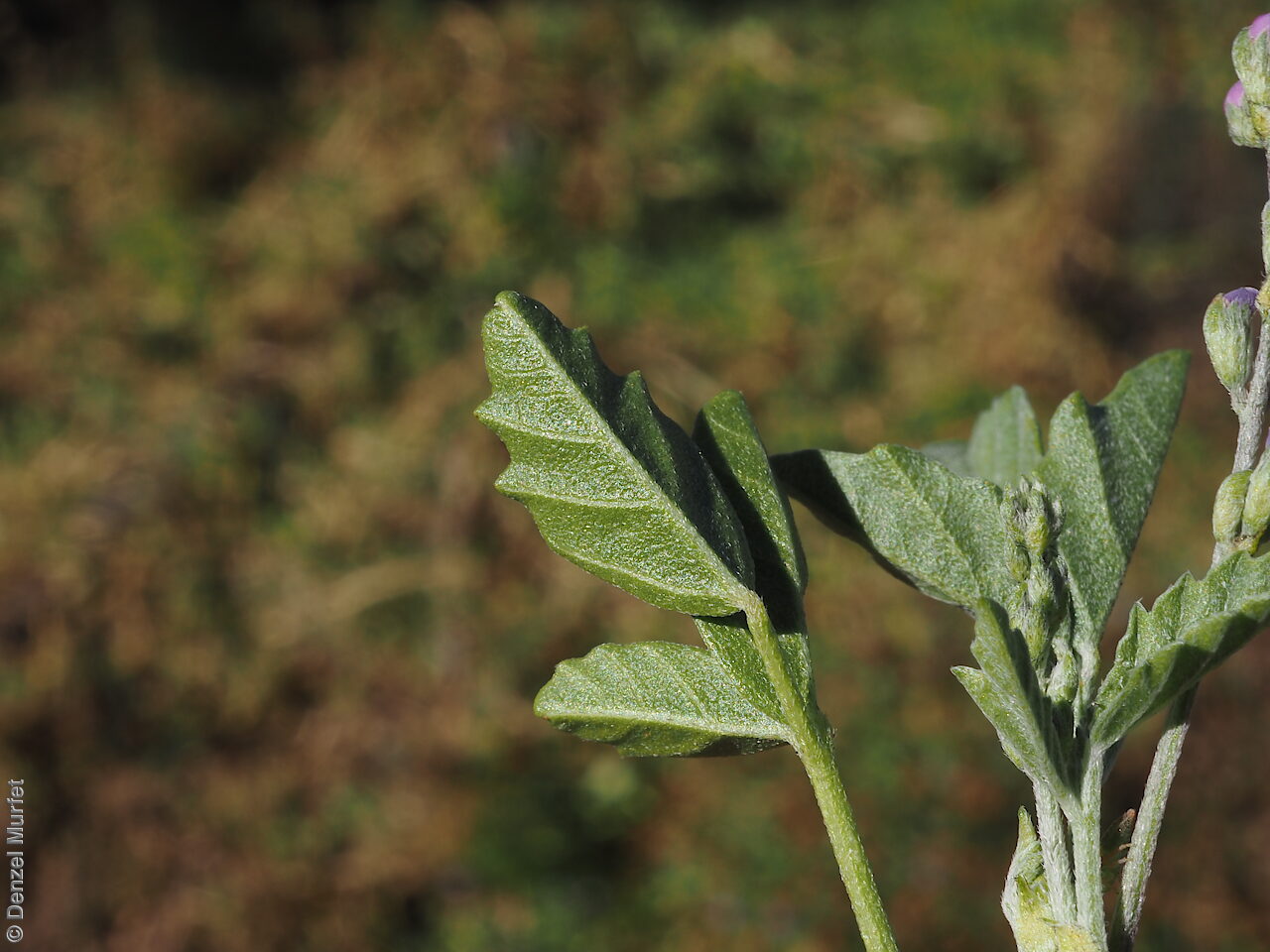
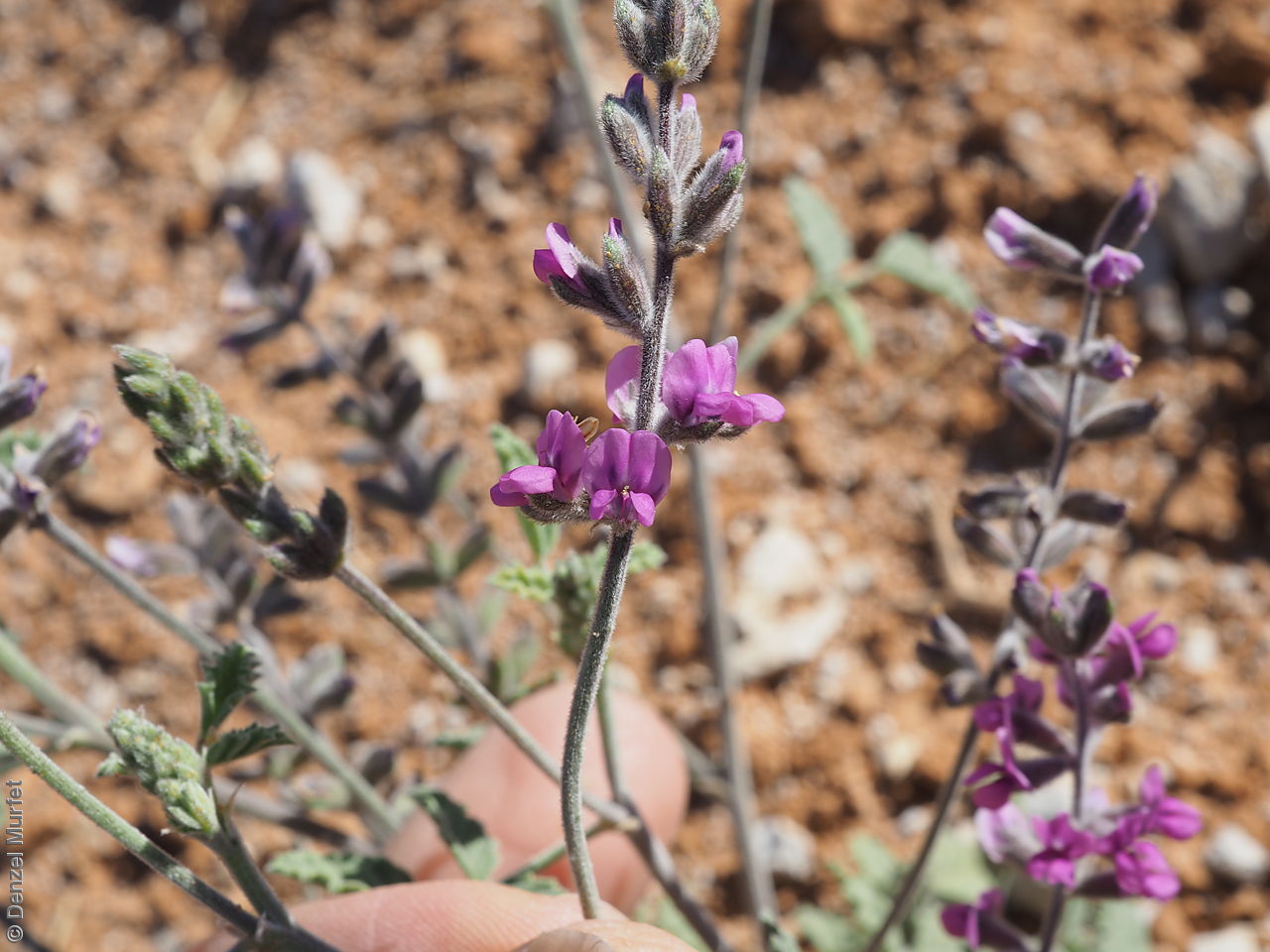
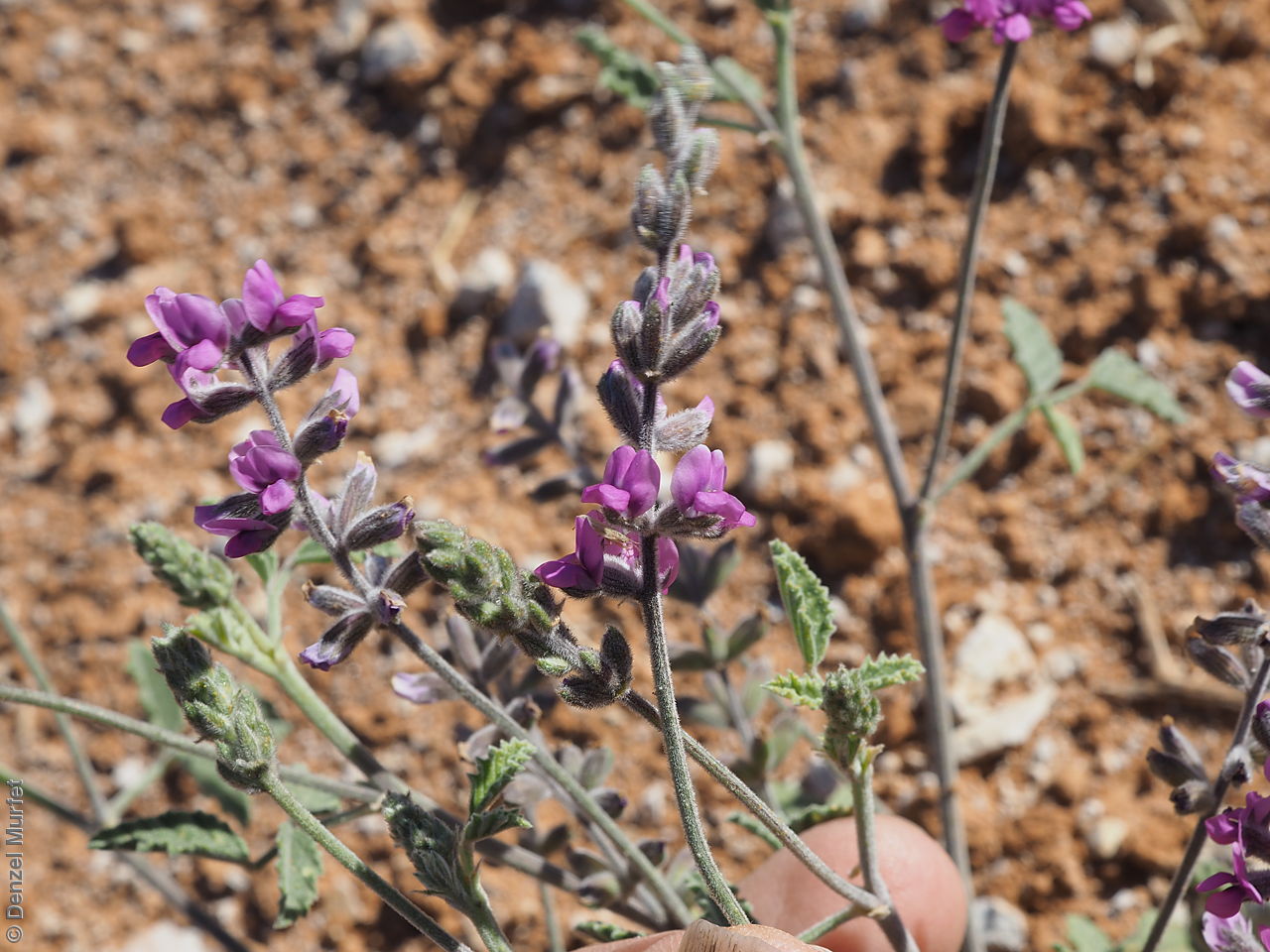
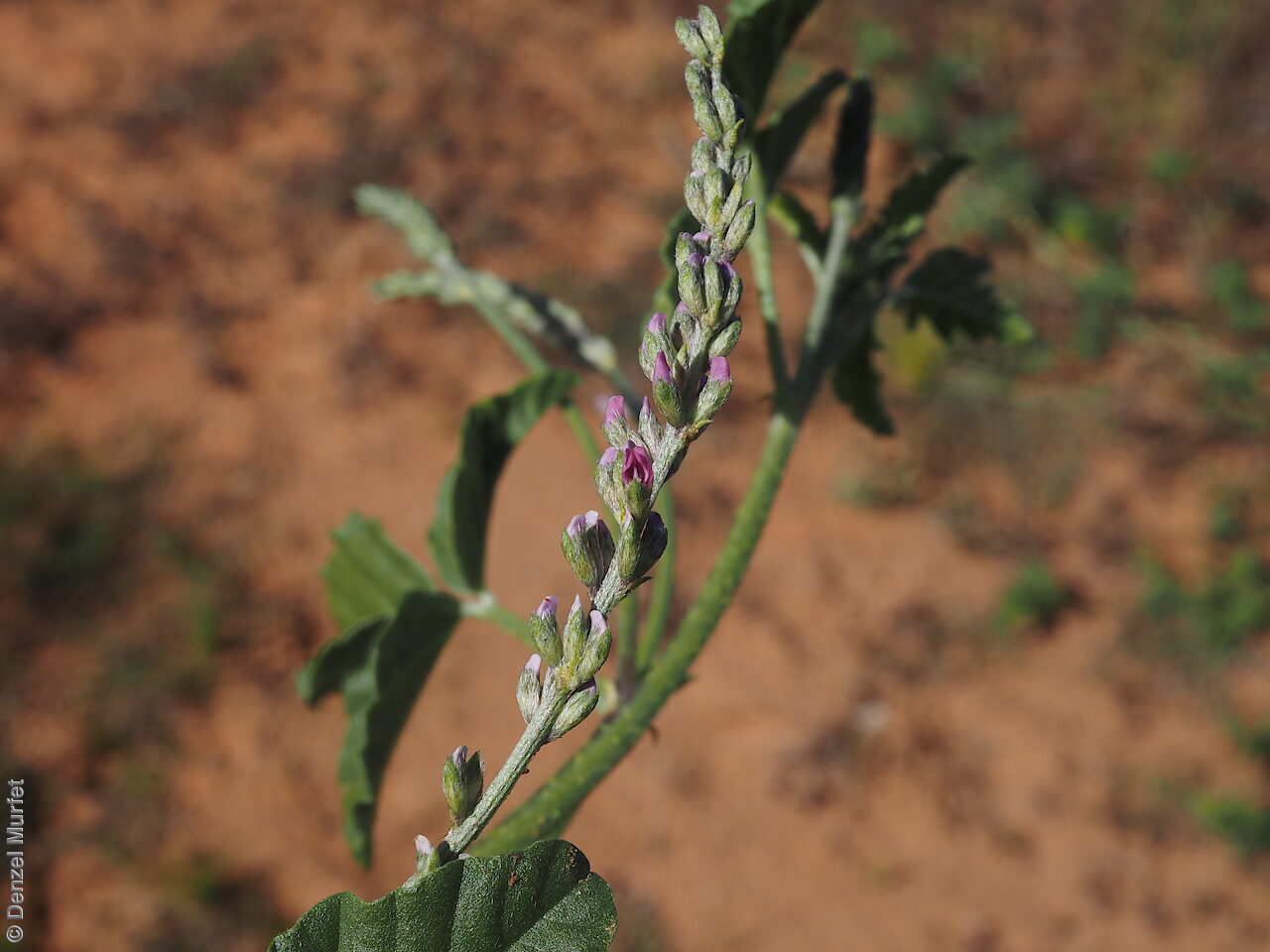
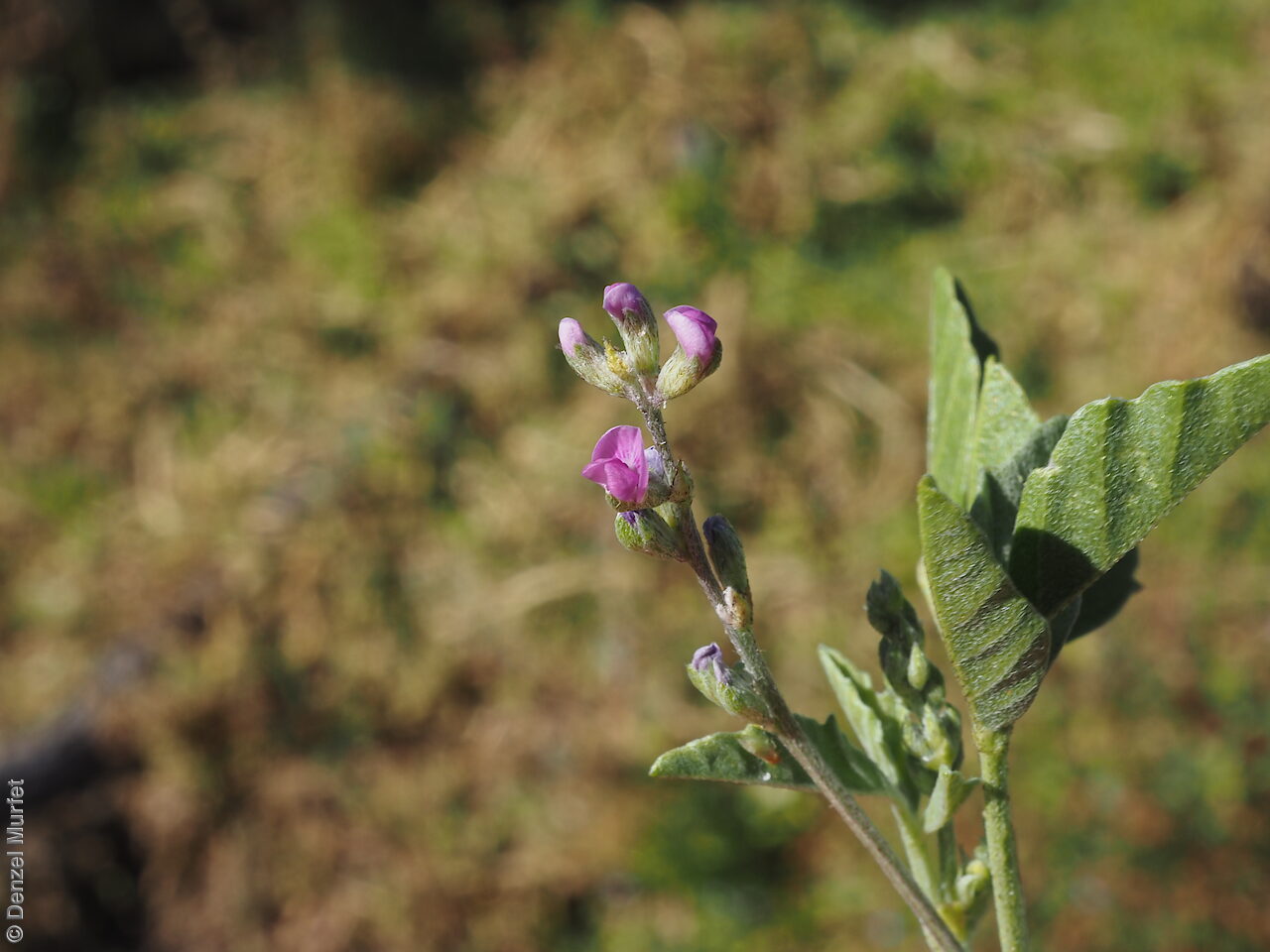
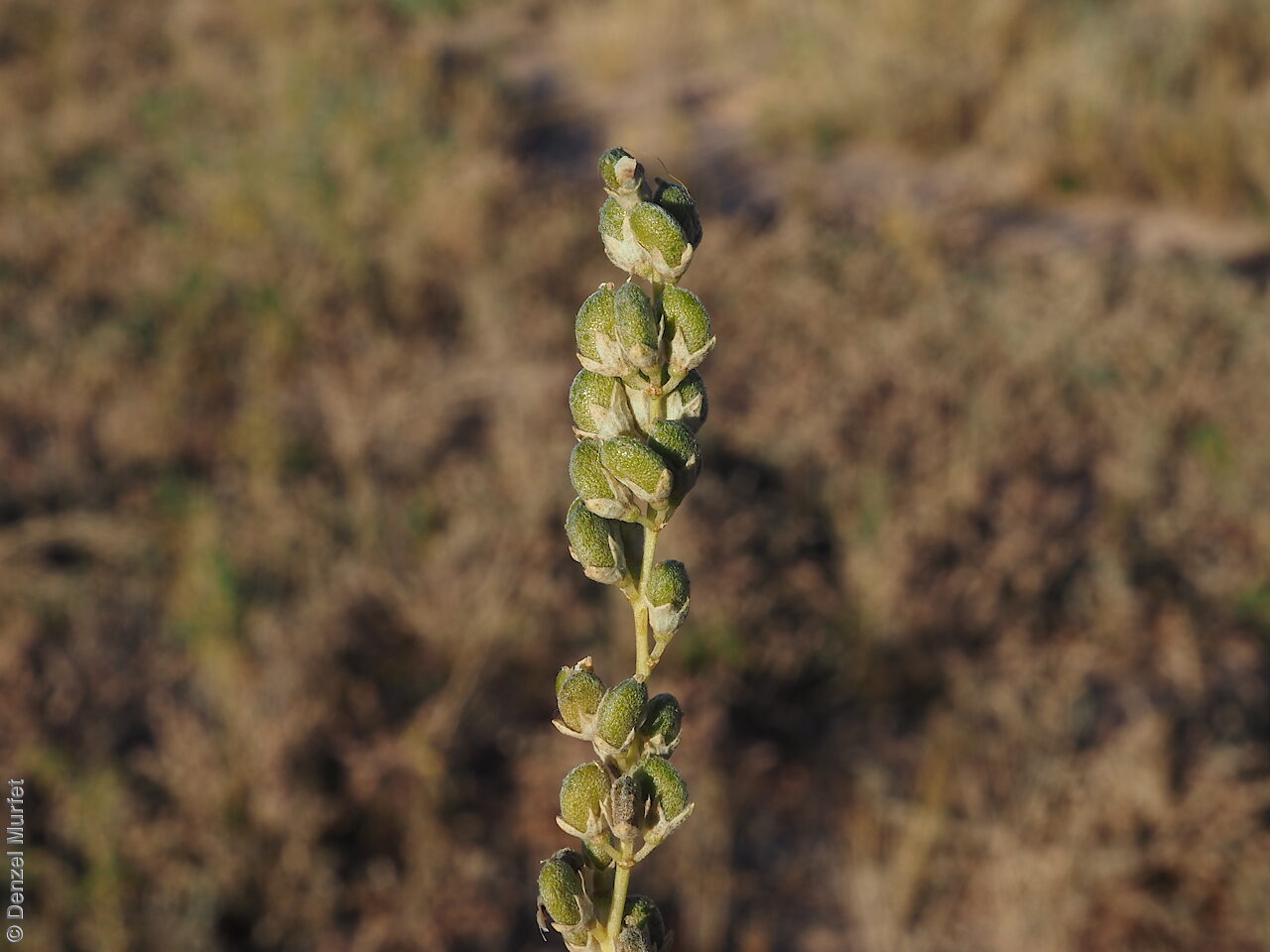
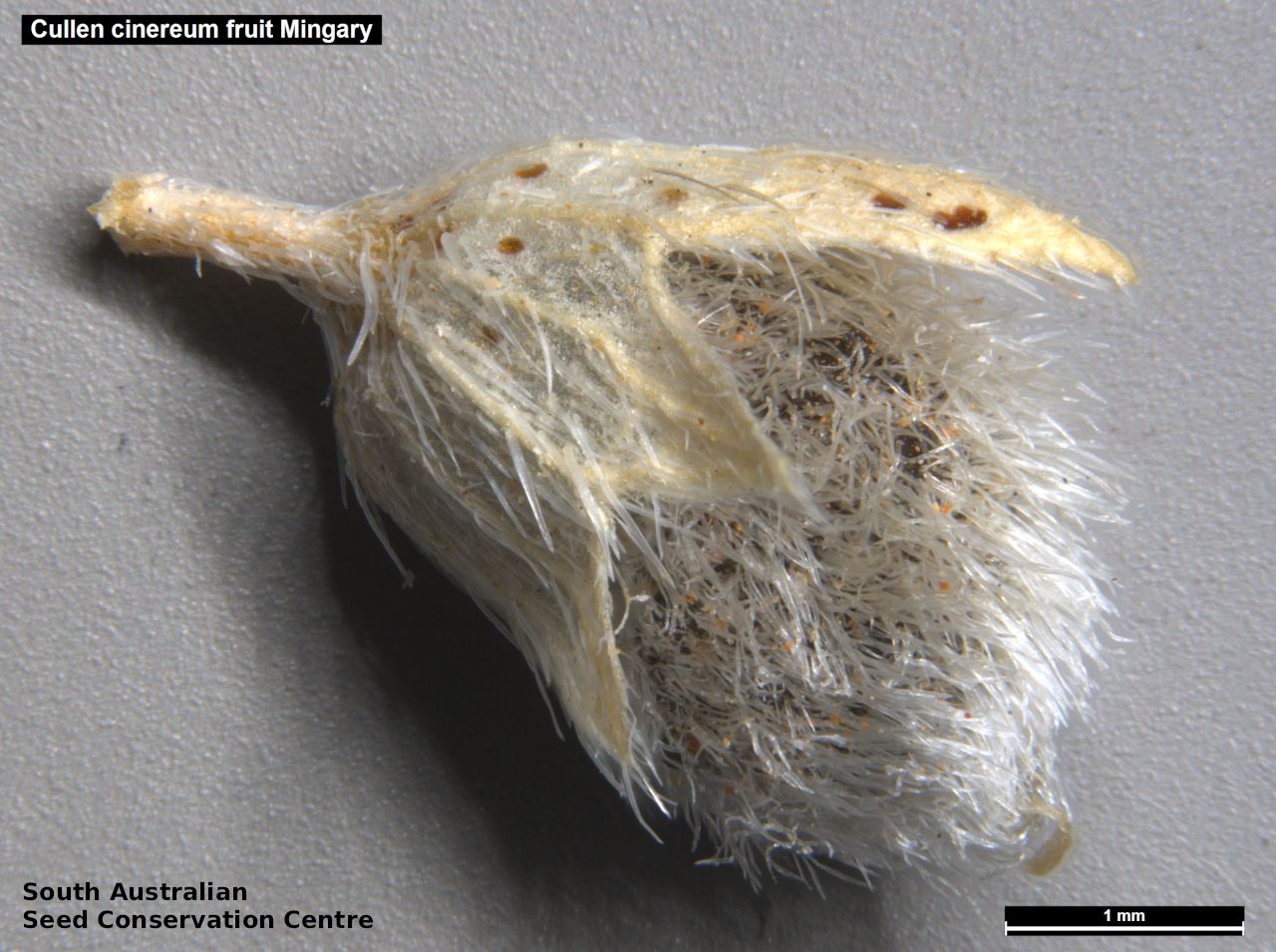
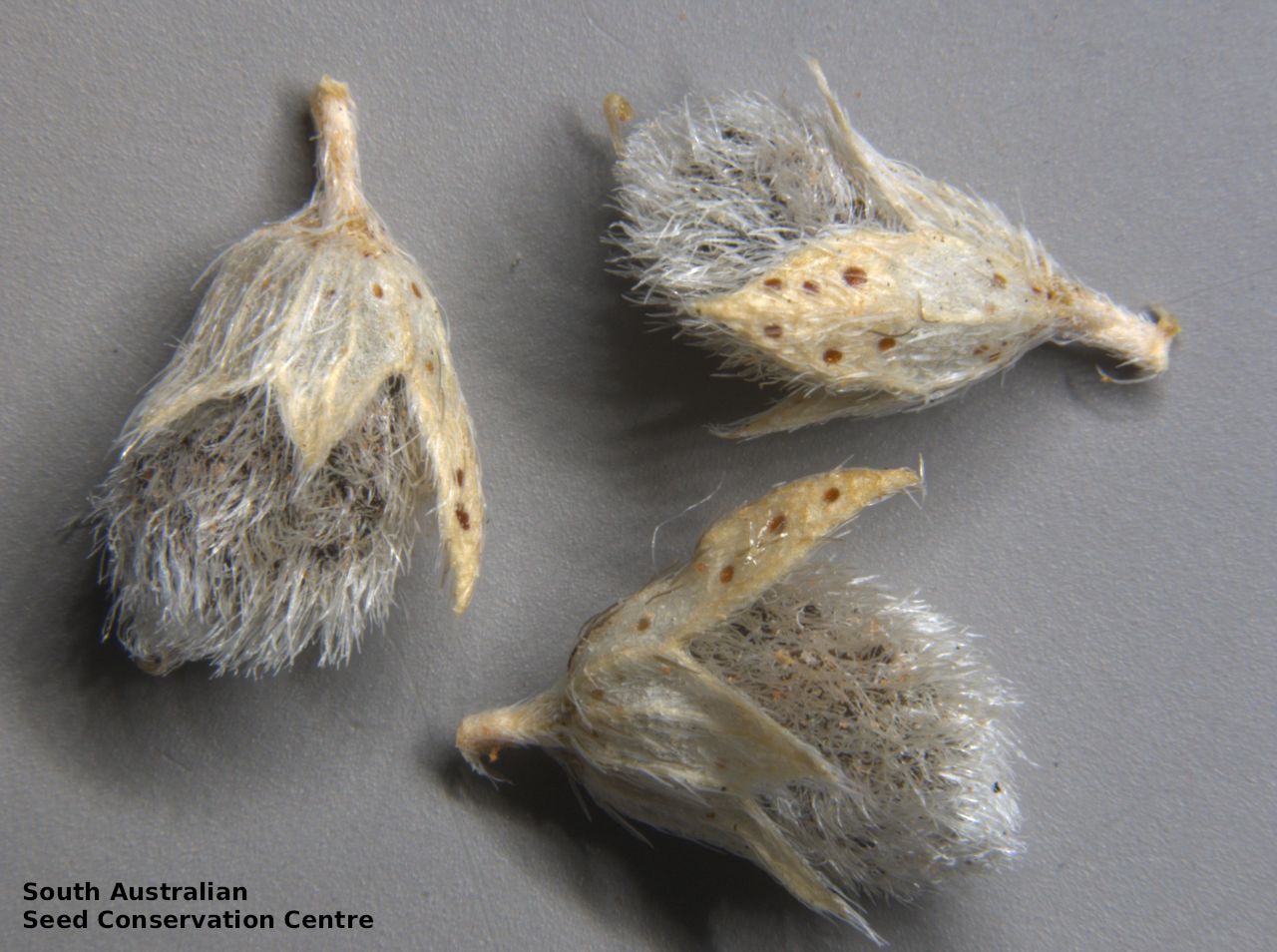
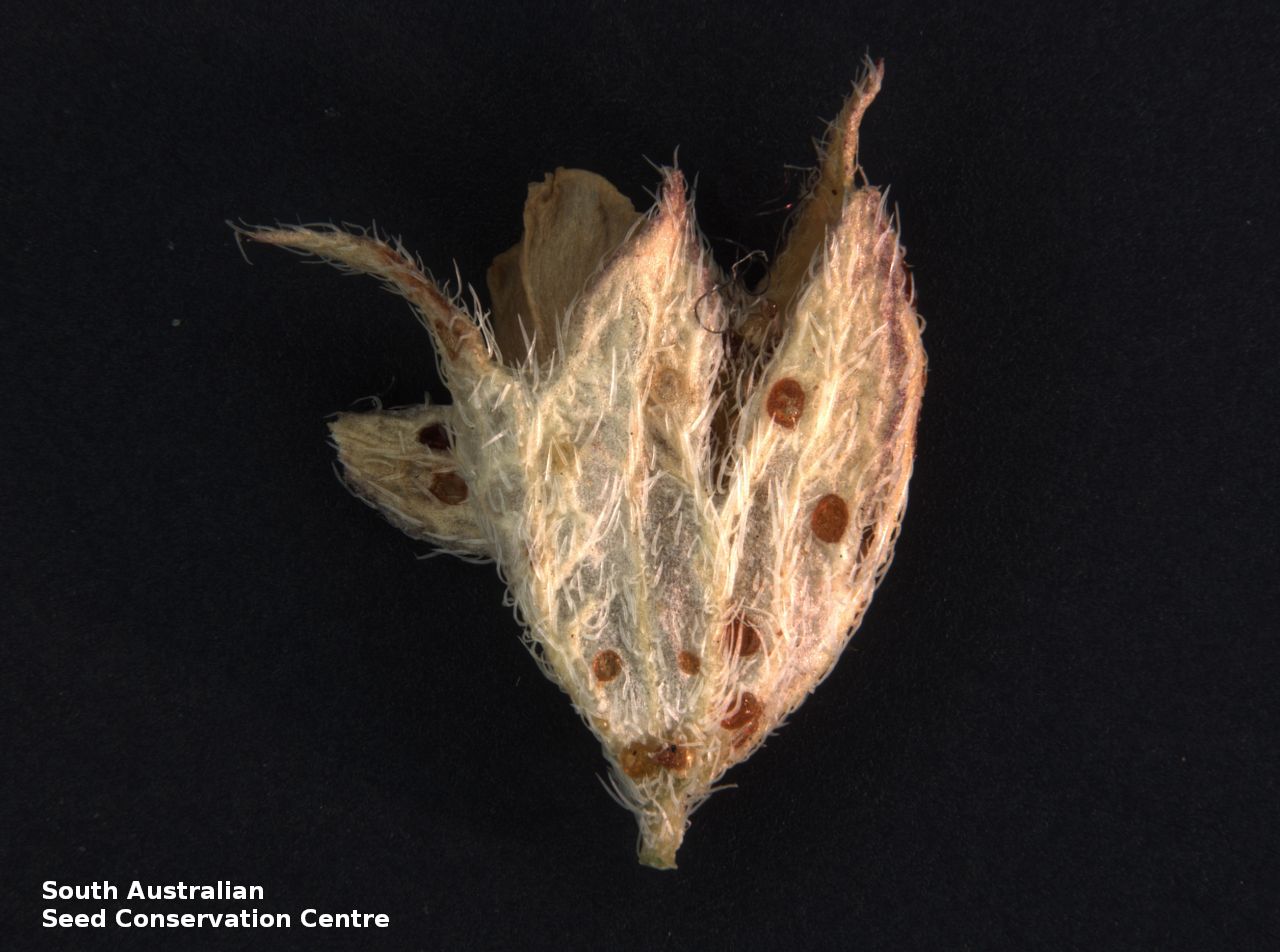
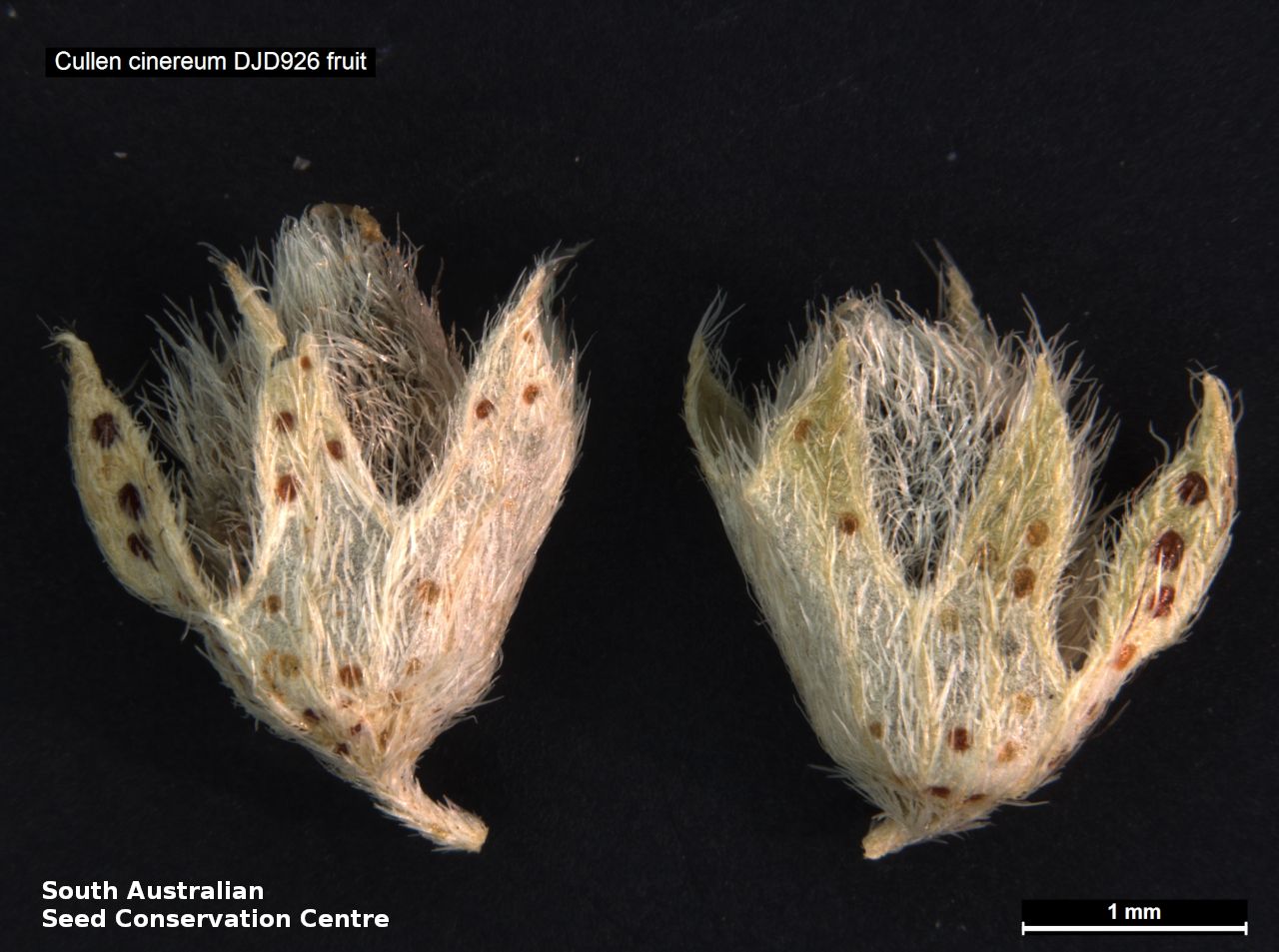
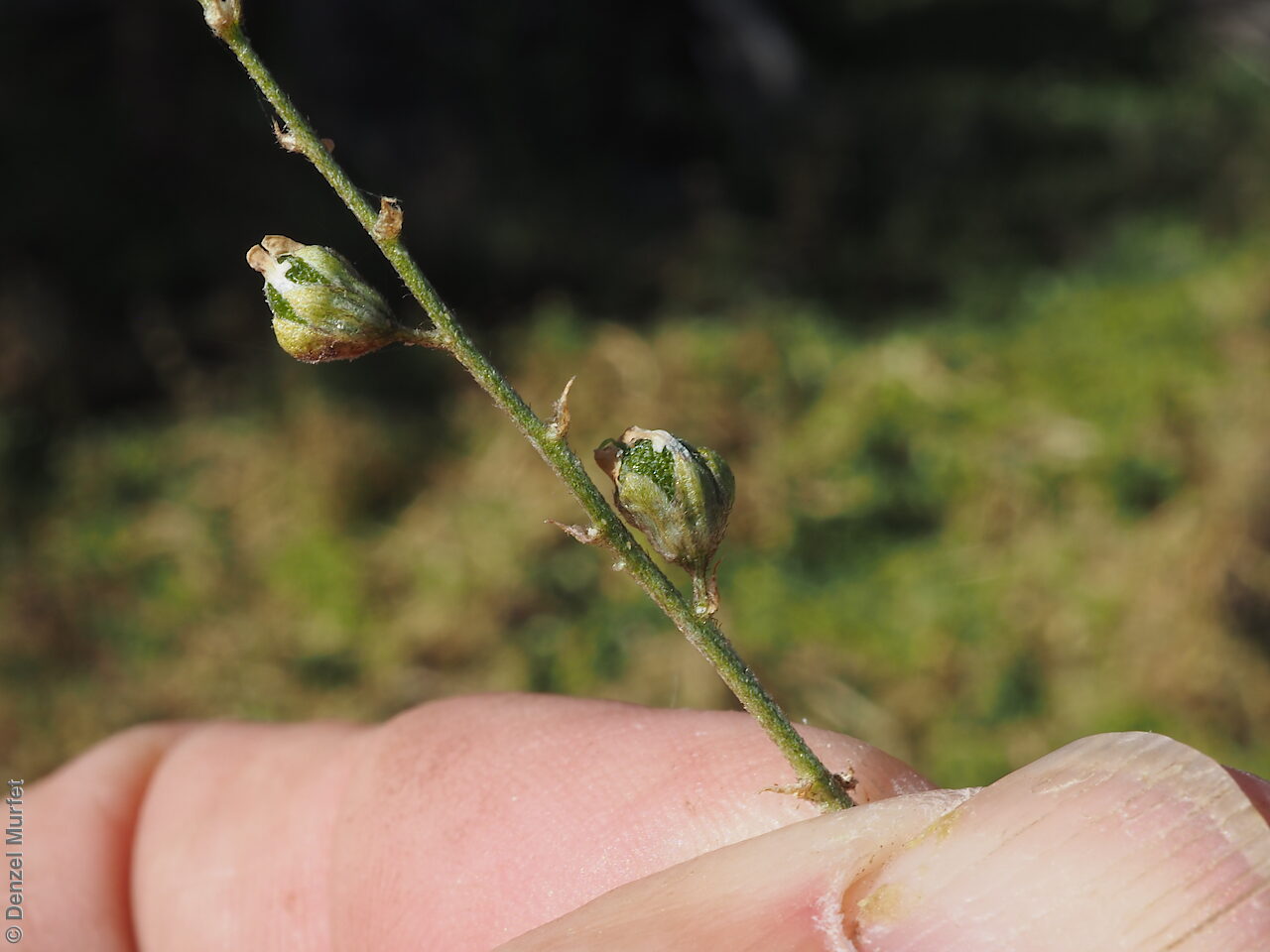
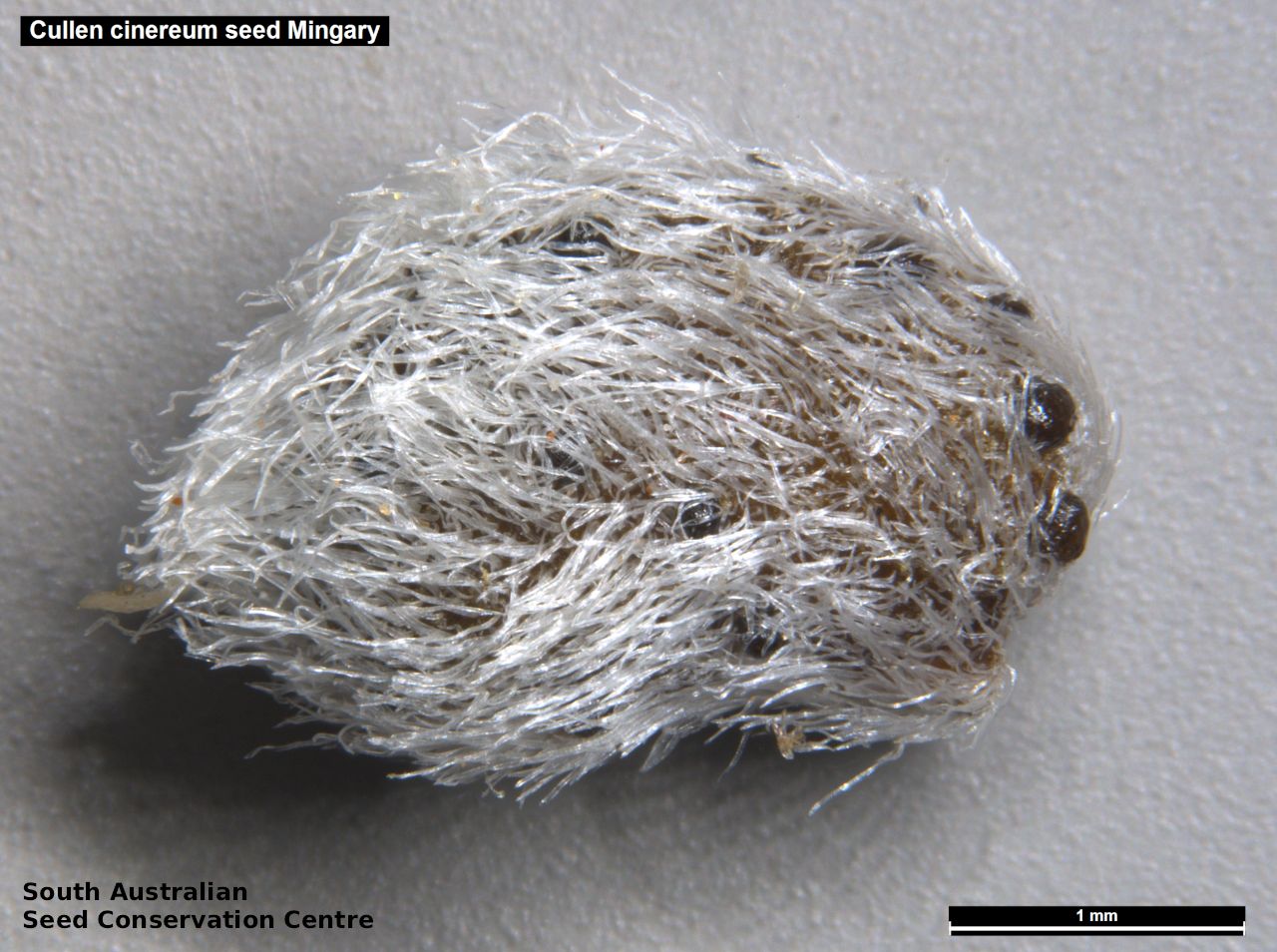
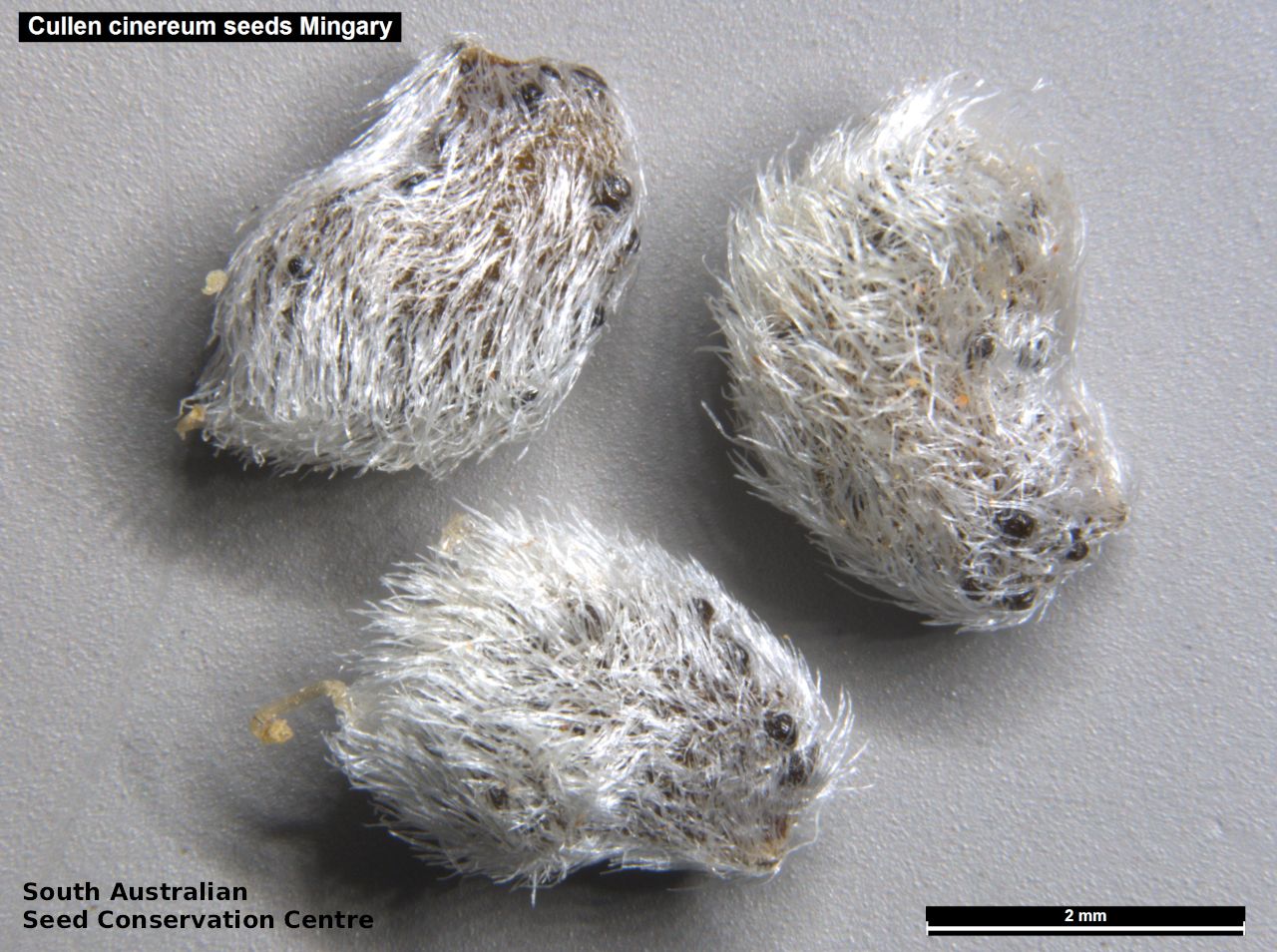
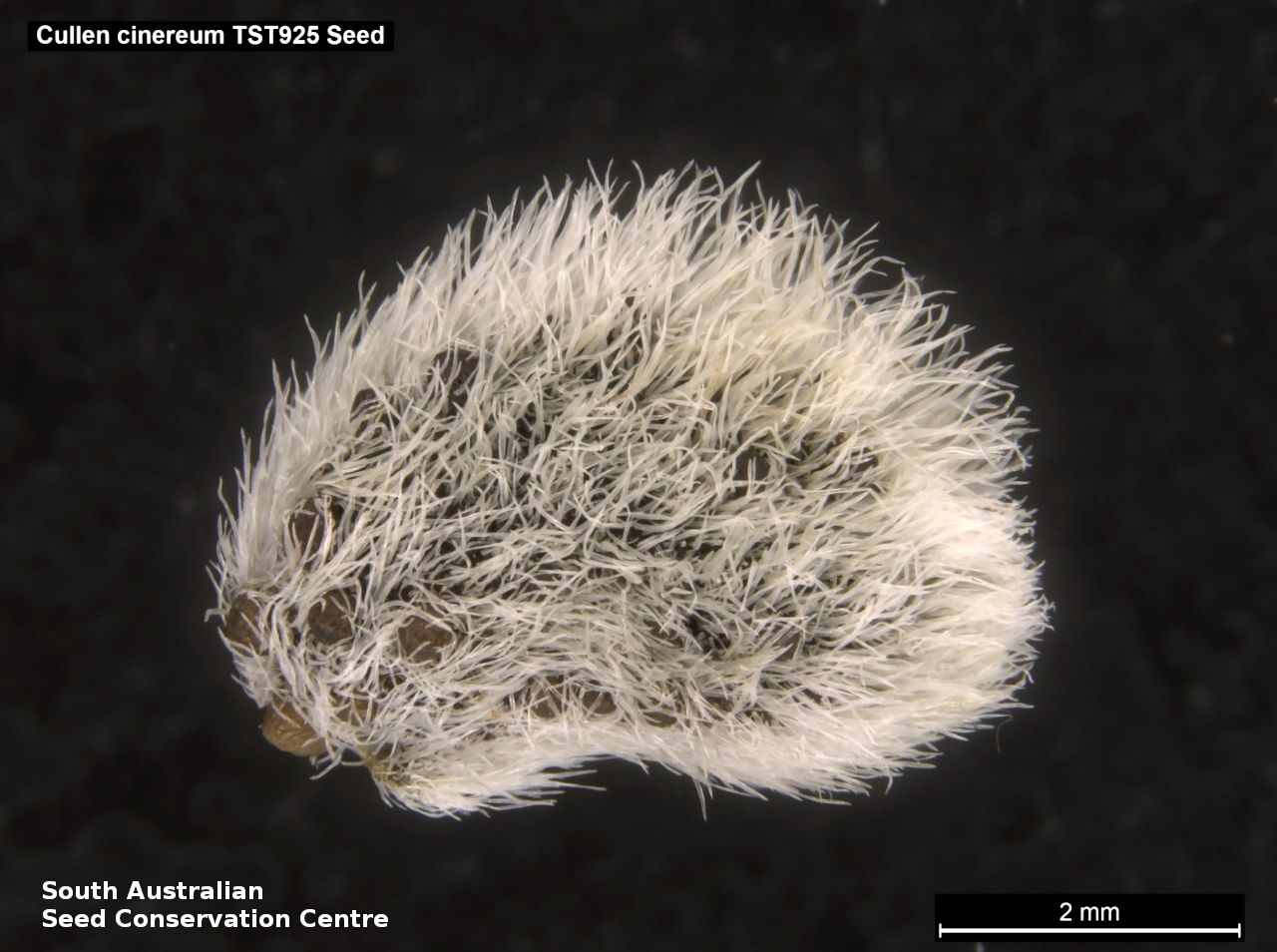
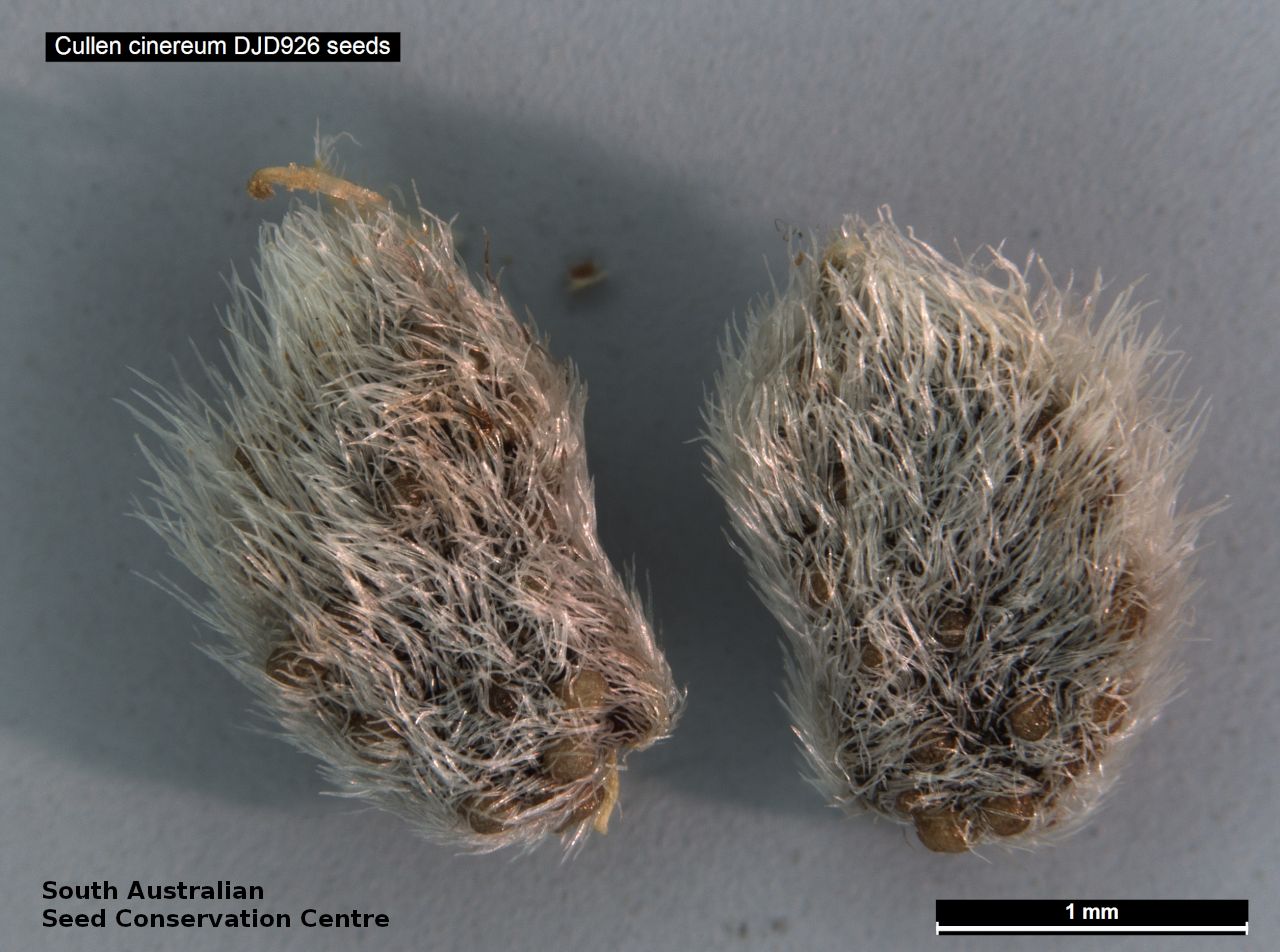
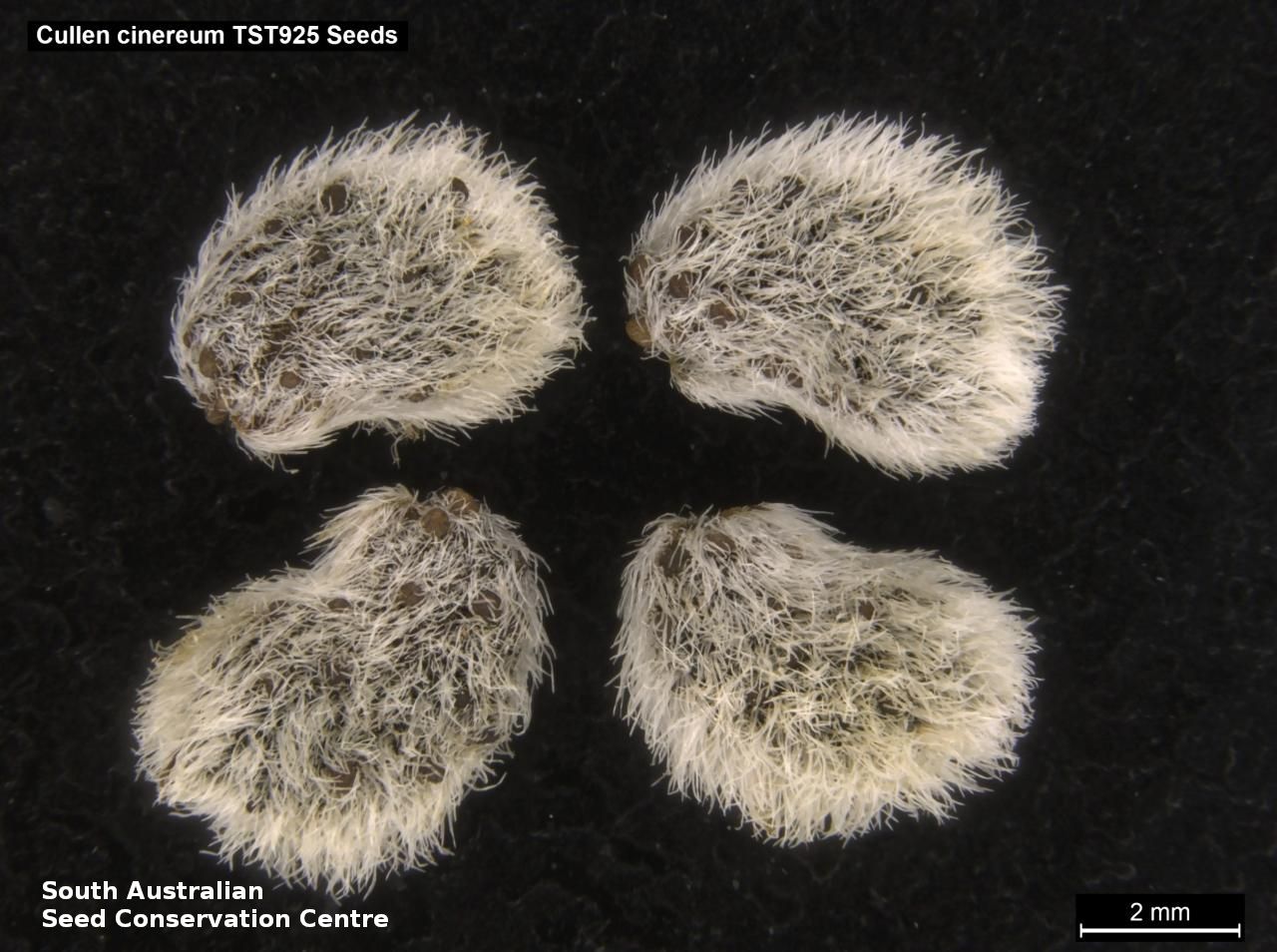
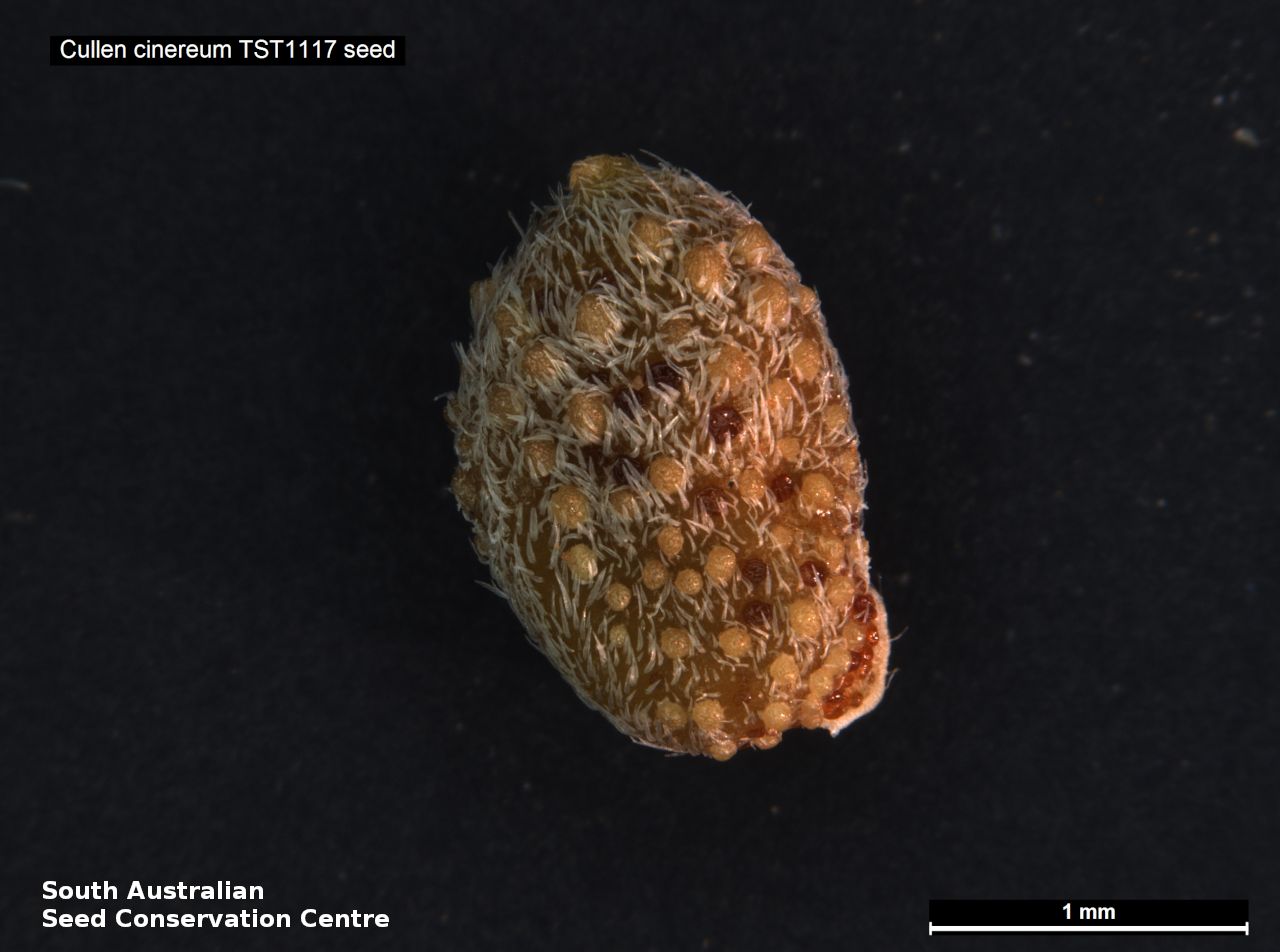
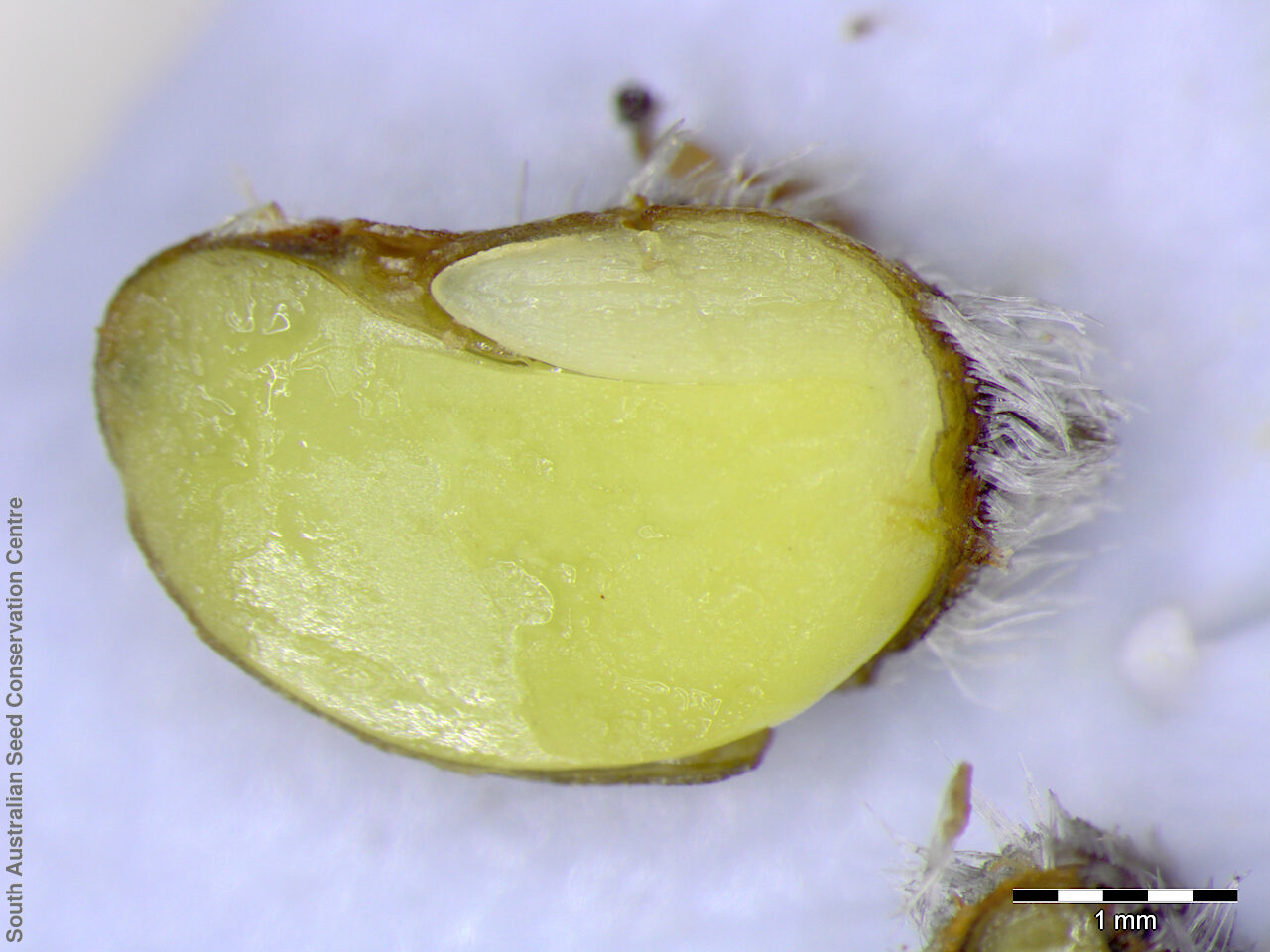
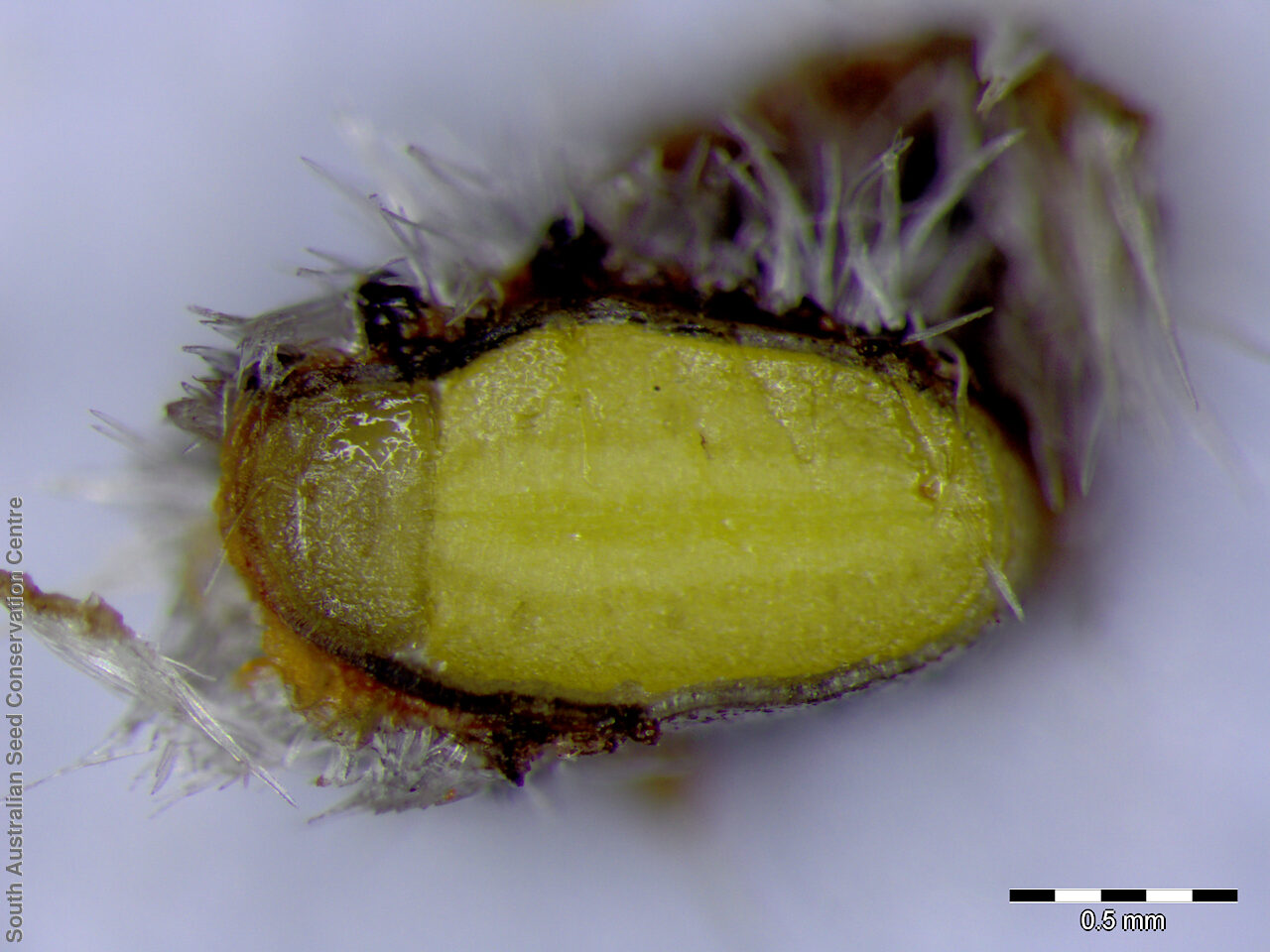

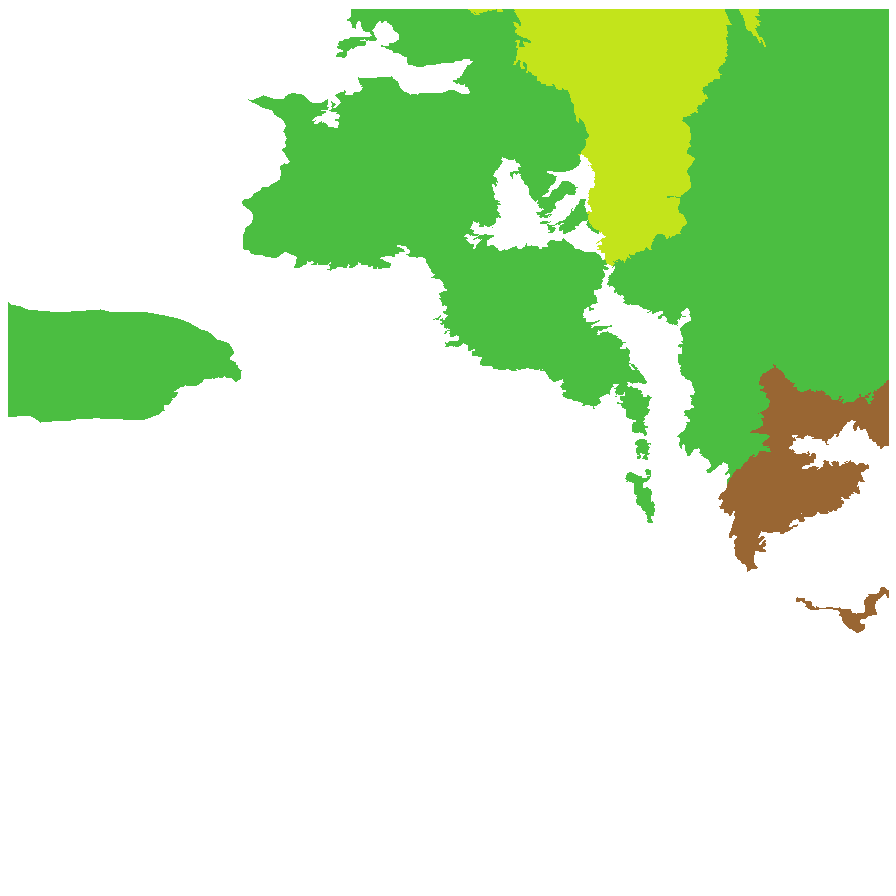
Botanical art
Prior names
Psoralea cinerea
Common names
Hoary Scurf-pea
Annual Scurf-pea
Etymology
Cullen named after William Cullen (1710-1790), a Scottish physician and chemist who lectured at the University of Glasgow on botany, among other things . Cinereum from Latin meaning ashy-grey, alluding to the grey appearance of the plant due hairs on the stems and leaves.
Distribution and status
Found mainly in the north-east corner of South Australia, with a small distribution on the Nullarbor growing in moist depressions and on floodplains. Also found in all mainland States. Native. Common in South Australia. Rare in Victoria. Common in the other States.
Herbarium regions: North Western, Lake Eyre, Nullarbor, Gairdner-Torrens, Flinders Ranges, Eastern, Murray
NRM regions: Alinytjara Wilurara, South Australian Arid Lands, South Australian Murray-Darling Basin
AVH map: SA distribution map (external link)
Plant description
Erect or ascending annual or perennial herb to 1 m tall with glabrous or grey-pubescent stems. Leaves pinnately trifoliate to 10 cm long. Leaflets ovate or elliptic to 5 cm long and 30 mm wide usually with both surfaces minutely hoary and dotted with glands; apices obtuse, mucronate; margins irregularly toothed. Flower-spike to 15 cm lon, with blue or pink-purple flowers, mostly in 3s along spike. Flowers probably all year round, depending on rainfall. Fruits are brown reniform pod with distinct brown-yellow glands, with one seed. Seeds are dark brown bean-shaped seed to 6 mm long and 4 mm wide, with a warty surface and covered in yellowish hairs. Seed embryo type is bent.
Seed collection and propagation
Collect seeds between January and December. Collect maturing pods, those that are fat, turning black and contain a brown seed inside, by running your hands along the fruit-spikes. Place the pods in a tray and leave to dry for 1 to 2 weeks or until the pods begin to split. Then rub the dried pods to dislodge the seeds. Use a sieve to separate any unwanted material. Store the seeds with a desiccant such as dried silica beads or dry rice, in an air tight container in a cool and dry place. From two collections, the seed viability was high, ranging from 90% to 100%. This species has physical dormancy that needs to be overcome for the seed to germinate (e.g. nicking or softening the seed coat).
| Location | No. of seeds (weight grams) | Number of plants | Date collected | Collection number Collection location | Date stored | % Viability | Storage temperature |
|---|---|---|---|---|---|---|---|
| BGA MSB | 5,800 (15.67 g) 5,800 (15.67 g) | 23-Oct-2004 | MOL4568 Gairdner-Torrens | 31-Mar-2006 | 100% | -18°C | |
| BGA | 6,000 (25.59 g) | 50+ | 1-Apr-2010 | TST925 Eastern | 90% | -18°C |
Number of plants: This is the number of plants from which the seeds were collected.
Collection location: The Herbarium of South Australia's region name.
% Viability: Percentage of filled healthy seeds determined by a cut test or x-ray.